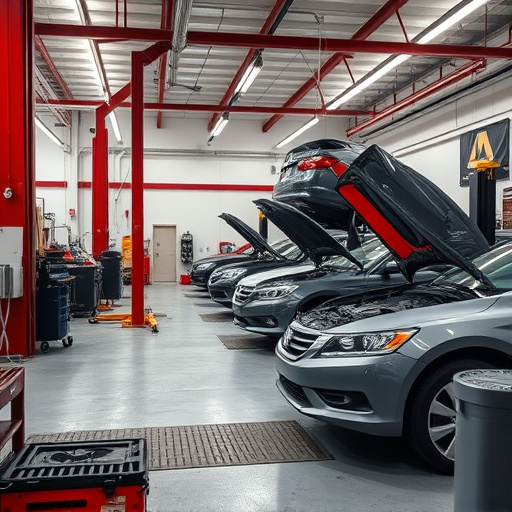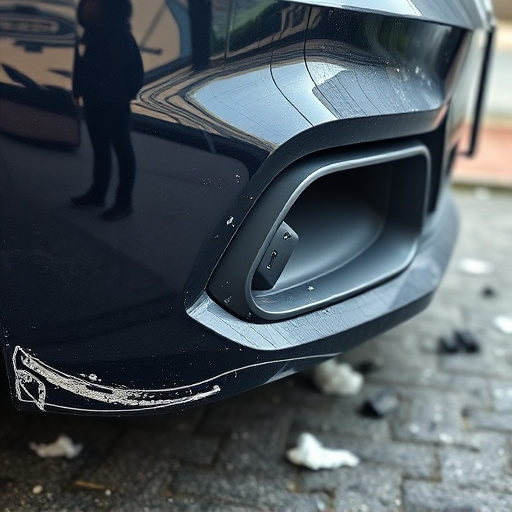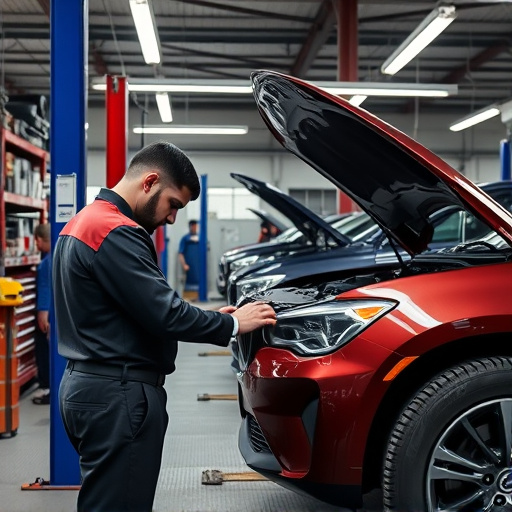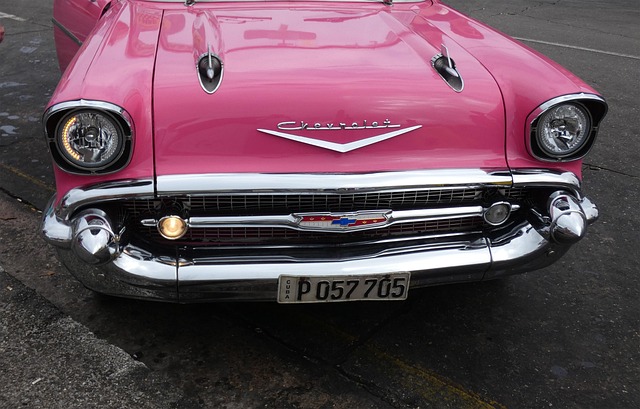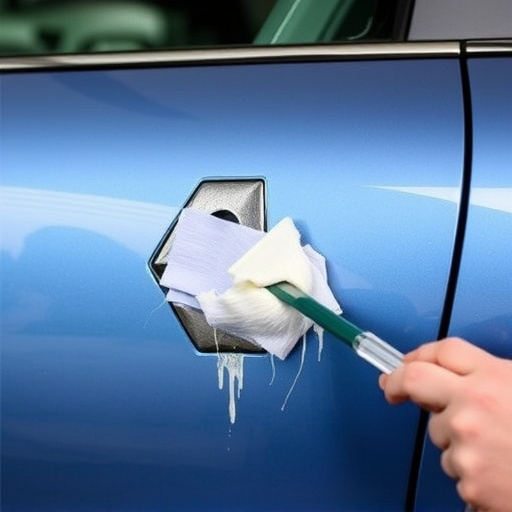Tesla bumper camera issues stem from sensor contamination, lens damage, software glitches, hardware malfunctions, or scratches, leading to poor image quality and safety feature ineffectiveness. Repairs focus on identifying root causes, especially the crucial Image Signal Processing (ISP), which converts raw data into clear images. A comprehensive guide outlines steps to power down the Tesla, remove and inspect the camera module, clean and replace faulty parts, ensure secure connections, realign sensors, and test ISP performance post-repair through the car's display or app for optimal safety.
Tesla bumper cameras are a crucial safety feature, but issues with image signal processing (ISP) can impair their effectiveness. This article guides you through understanding and repairing faulty ISP in your Tesla bumper camera. We’ll delve into common problems, the vital role of ISP in camera performance, and provide a step-by-step repair guide to get your Tesla’s front-end surveillance back on track. Learn how to troubleshoot and fix this essential component for optimal safety and peace of mind.
- Understanding Tesla Bumper Camera Issues: Common Problems and Causes
- The Role of Image Signal Processing (ISP): How It Affects Camera Performance
- Step-by-Step Guide to Repairing Your Tesla Bumper Camera's ISP Functionality
Understanding Tesla Bumper Camera Issues: Common Problems and Causes
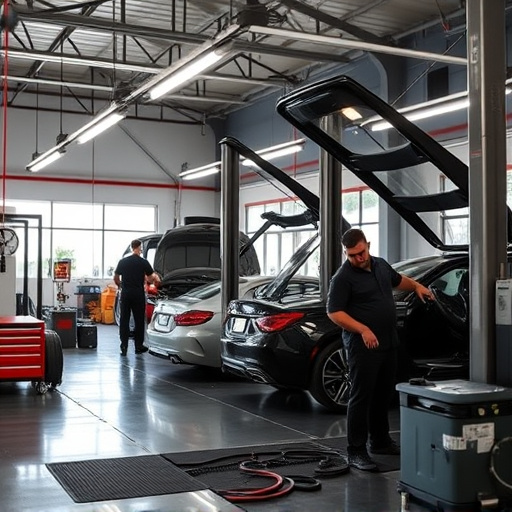
Tesla bumper cameras are an integral part of the vehicle’s safety system, providing a clear view during parking and low-speed maneuvers. However, like any other component, they can encounter issues that may require professional Tesla bumper camera repair. Understanding these common problems is the first step towards effective troubleshooting and maintenance.
One frequent issue is faulty image signal processing, which can lead to distorted or unclear footage. This problem often arises due to sensor contamination, lens damage, or software glitches. Scratches on the camera lens or nearby surfaces can also cause image quality degradation. In some cases, improper calibration or hardware malfunction within the vehicle’s electrical system may contribute to the problem. Identifying the root cause is crucial for effective Tesla bumper camera repair, ensuring optimal performance and safety for drivers.
The Role of Image Signal Processing (ISP): How It Affects Camera Performance
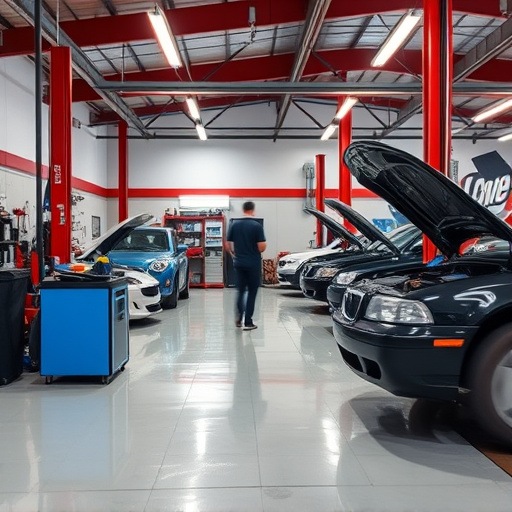
The role of Image Signal Processing (ISP) is often overlooked when considering Tesla bumper camera repairs, yet it’s a key component that affects camera performance. ISP is responsible for converting raw data captured by the camera sensor into an image that can be processed and displayed. It involves various functions like noise reduction, colour correction, edge detection, and sharpness enhancement, all of which contribute to the overall quality of the video feed. A faulty ISP can result in distorted images, poor low-light performance, or even complete failure to capture a clear picture, underscoring the need for meticulous repair when addressing Tesla bumper camera issues.
In the context of Tesla bumper camera repairs, ensuring optimal ISP is crucial. This involves not just replacing faulty components but also calibrating and fine-tuning the system to match the original manufacturer standards. Proper ISP allows the camera to accurately interpret and transmit visual data, enhancing safety features like lane departure warnings, collision avoidance systems, and autonomous driving capabilities. Therefore, when considering Tesla bumper camera repair, prioritizing thorough ISP restoration alongside physical car body restoration and vehicle repair is essential for maintaining peak performance and safety standards.
Step-by-Step Guide to Repairing Your Tesla Bumper Camera's ISP Functionality
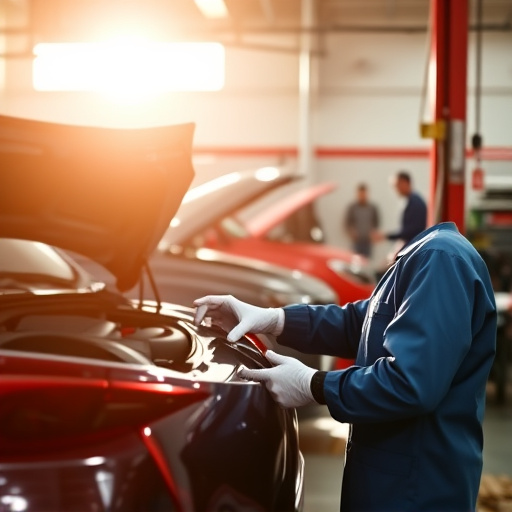
Repairing your Tesla bumper camera’s Image Signal Processing (ISP) functionality is a crucial step in ensuring optimal performance and enhancing your vehicle’s safety features. Here’s a step-by-step guide to help you navigate this process, similar to restoring a car paint job or providing tire services.
First, power down your Tesla completely to avoid any potential interference. Next, locate the bumper camera module, typically found on the front or rear bumper. Carefully remove the existing camera by detaching any wiring and connectors. With the camera accessible, inspect for any visible damage or debris that might be obstructing its view. Clean the lens thoroughly using a specialized cleaner designed for automotive applications. Proceed to replace any faulty parts or components within the camera module itself. Ensure all connections are secure and well-soldered if needed. Reinstall the camera, making sure it aligns correctly with your Tesla’s sensors. Finally, power on the vehicle and test the ISP functionality through the car’s display or connected app, validating its improved performance after the repair.
In conclusion, addressing faulty image signal processing (ISP) in your Tesla bumper camera is a crucial step towards enhancing your vehicle’s safety and driving experience. By understanding the common issues, their causes, and implementing a straightforward repair guide, you can effectively restore optimal camera performance. Don’t let a malfunctioning ISP hinder your Tesla’s advanced driver-assistance systems; take control of the situation and embark on the Tesla bumper camera repair journey to ensure a seamless and secure drive.



